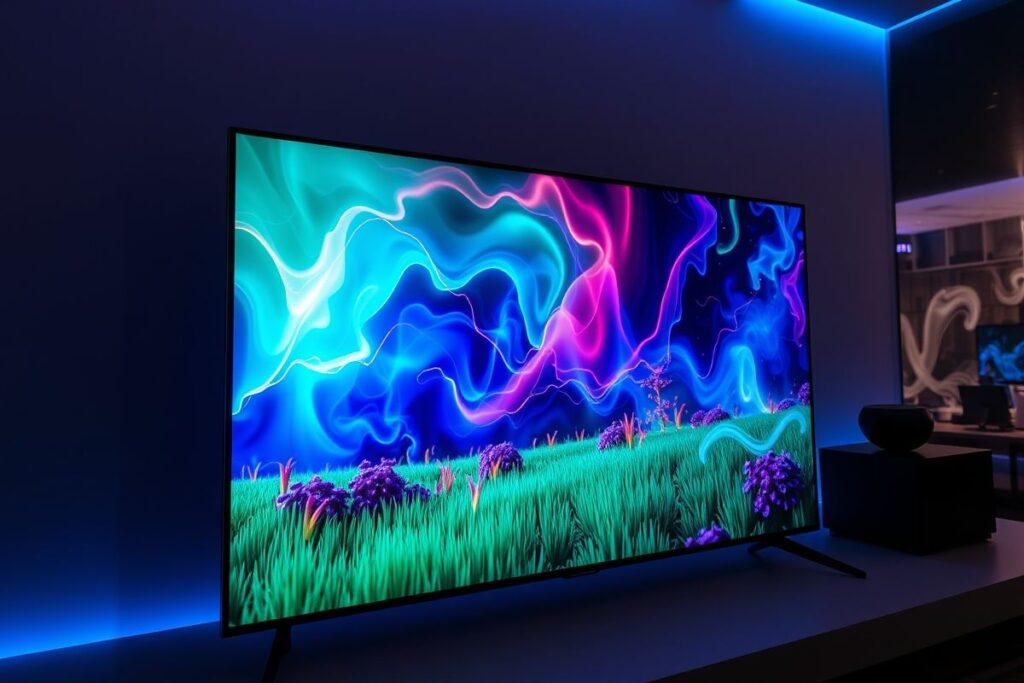OLED displays are gorgeous. Their vibrant colors, perfect blacks, and incredible contrast make them a top choice for high-end TVs and smartphones. But lurking beneath that stunning visual experience is a persistent worry for many: burn-in. This phenomenon, where ghost images of static elements get permanently etched onto the screen, has been a concern with OLED technology since its inception. So, should gamers, who often spend hours staring at static HUD elements, be concerned about OLED burn-in? The answer, as with most things tech-related, isn’t a simple yes or no. This article dives deep into the issue, exploring the causes of burn-in, the preventative measures manufacturers are taking, and ultimately, whether gamers should be worried about investing in an OLED display.

Understanding OLED Burn-In
What Causes Burn-In?
OLED, or Organic Light Emitting Diode, displays work differently than traditional LCDs. Each pixel is its own light source, meaning no backlight is required. This allows for perfect blacks and incredible contrast. However, these organic compounds that illuminate the pixels have a finite lifespan. Over time, their brightness degrades. When a static element is displayed for extended periods, those pixels degrade faster than the surrounding pixels, leading to a faint but permanent ghost image.
The lifespan of these organic compounds varies depending on the color. Blue pixels, for example, have a shorter lifespan than red or green pixels. This difference in degradation rates can contribute to uneven burn-in, particularly noticeable in areas with static blue elements, like a channel logo or a game’s HUD.
The severity of burn-in also depends on the brightness of the displayed content. Brighter images accelerate the degradation process, making the risk of burn-in higher for those who prefer a vibrant viewing experience.
How Noticeable is Burn-In?
Burn-in can manifest in various ways, from subtle ghost images to more prominent, distracting shadows. In its early stages, it might only be noticeable against uniform backgrounds, such as a loading screen or a skybox in a game. As it progresses, the ghost image can become more persistent, affecting the overall viewing experience.
The noticeability of burn-in also depends on individual sensitivity and viewing habits. Some people may be more attuned to subtle changes in the display, while others might not notice it until it becomes more severe. Furthermore, the type of content being viewed can also influence its visibility. Burn-in is often less noticeable in dynamic, fast-paced content like games, compared to static content like news tickers or channel logos.
The ambient lighting in the viewing environment can also affect the perception of burn-in. In brighter rooms, the ghost image might be less noticeable, while in darker rooms, it can be more prominent and distracting.
Mitigating the Risk of Burn-In
Manufacturer Interventions
OLED manufacturers are acutely aware of the burn-in issue and have implemented several techniques to mitigate the risk. These include pixel shifting, where the image is subtly moved across the screen to distribute the workload evenly among the pixels. This prevents any single pixel from being constantly illuminated, reducing the chance of uneven degradation.
Another technique is automatic brightness limiting (ABL), which dynamically adjusts the overall brightness of the screen based on the content being displayed. This helps prevent excessive brightness, especially in scenes with large areas of bright colors, which can accelerate burn-in.
Screen savers and logo dimming features are also common in modern OLED devices. Screen savers prevent static elements from being displayed for extended periods, while logo dimming automatically reduces the brightness of static logos, like channel logos or game HUDs.
User Best Practices
Users can also take proactive steps to minimize the risk of burn-in on their OLED displays. Avoiding displaying static content for extended periods is crucial. This includes pausing games for long durations or leaving the same channel on for hours at a time.
Adjusting the screen brightness to a comfortable level, rather than maxing it out, can also help extend the lifespan of the organic compounds. Lower brightness levels reduce the stress on the pixels, slowing down the degradation process.
Varying the content viewed on the OLED display is another important step. Watching a mix of movies, TV shows, and playing games can help distribute the workload evenly across the pixels, preventing uneven wear and tear.
The Gamer’s Dilemma: OLED vs. Burn-In
Gaming and Static HUD Elements
Gamers represent a unique use case for OLED displays. While the vibrant colors and deep blacks enhance the gaming experience, many games feature static HUD elements, like health bars, minimaps, and ammo counters. These static elements are prime candidates for causing burn-in, raising concerns among gamers considering investing in OLED technology.
The duration and intensity of gaming sessions also contribute to the risk. Gamers who spend hours playing the same game with a persistent HUD are more susceptible to burn-in than those who play a variety of games with different HUD layouts.
The specific game being played can also influence the risk. Games with particularly bright and static HUD elements pose a higher risk than those with less intrusive or dynamic HUDs.
Weighing the Risks and Rewards
Ultimately, the decision of whether or not to invest in an OLED display for gaming comes down to a personal risk assessment. Modern OLEDs are significantly more resistant to burn-in than their predecessors, thanks to advancements in technology and manufacturer interventions.
For the vast majority of gamers, the risk of burn-in is relatively low, especially if they follow user best practices and take advantage of the preventative measures built into modern OLED displays. However, for those who exclusively play a single game with a very persistent and bright HUD for extended periods, the risk might be higher.
Weighing the unparalleled visual experience offered by OLED against the potential risk of burn-in is a personal choice. For many, the benefits outweigh the risks, especially considering the relatively low likelihood of burn-in under normal usage conditions.

Leave a Reply